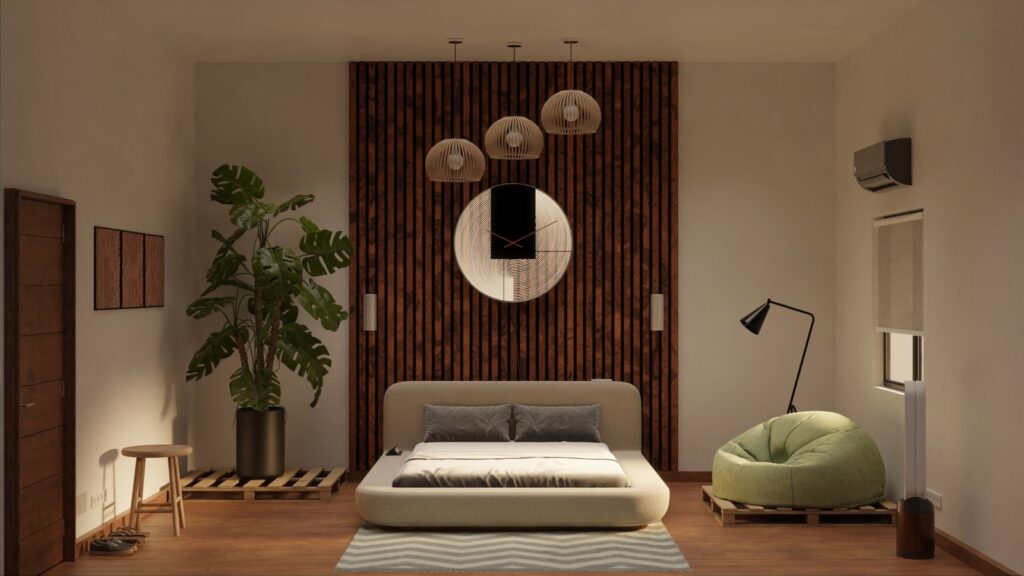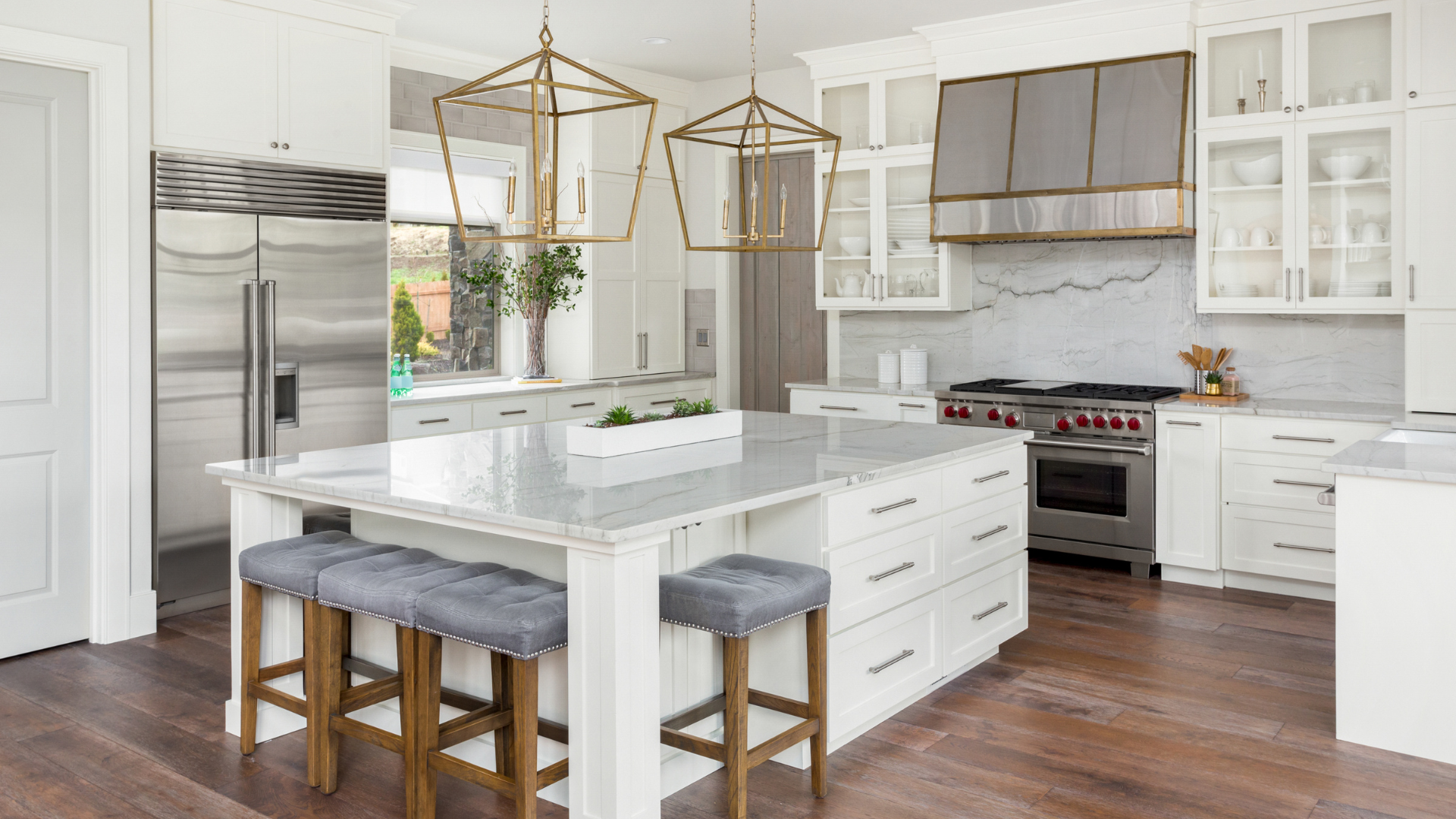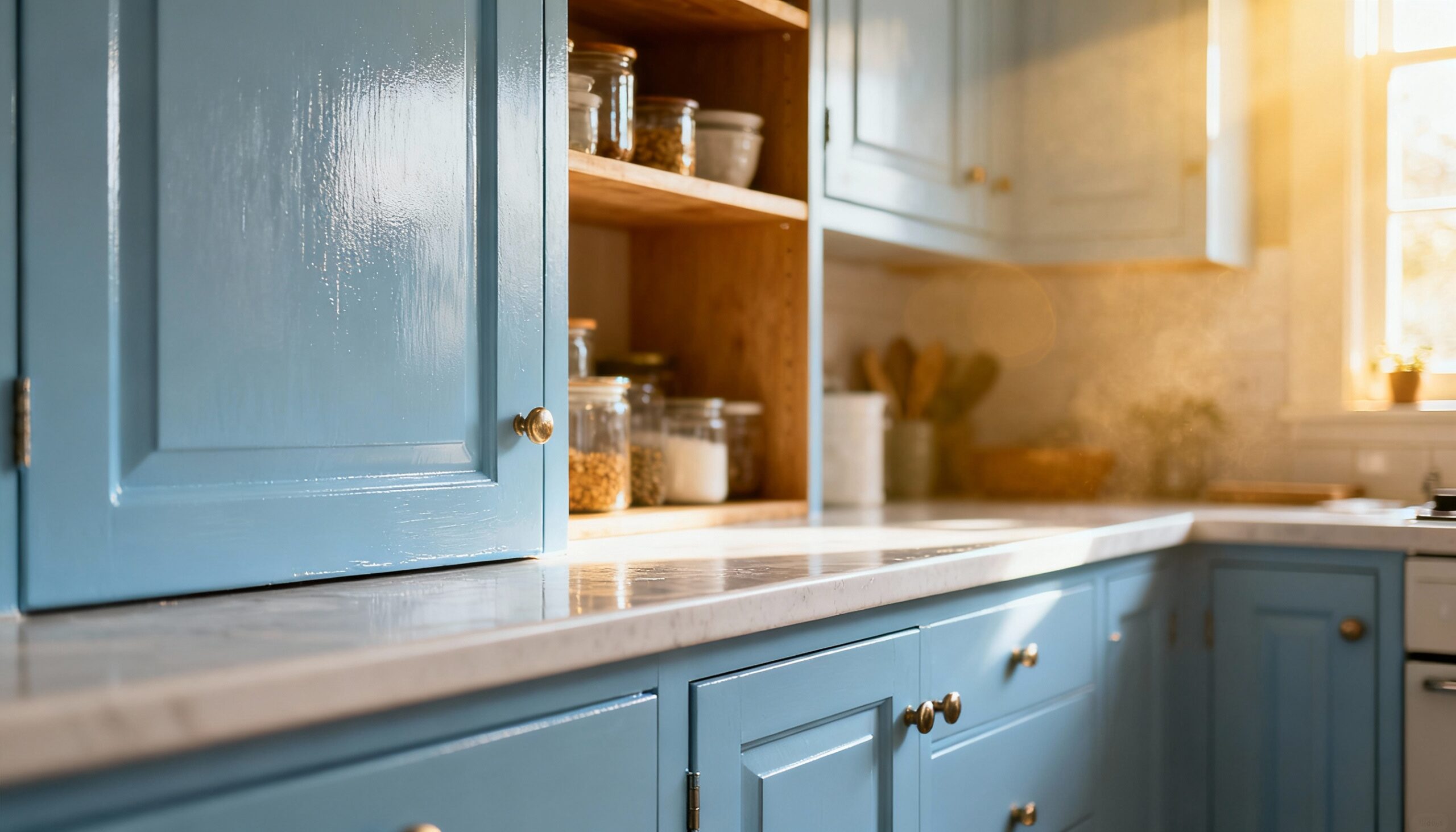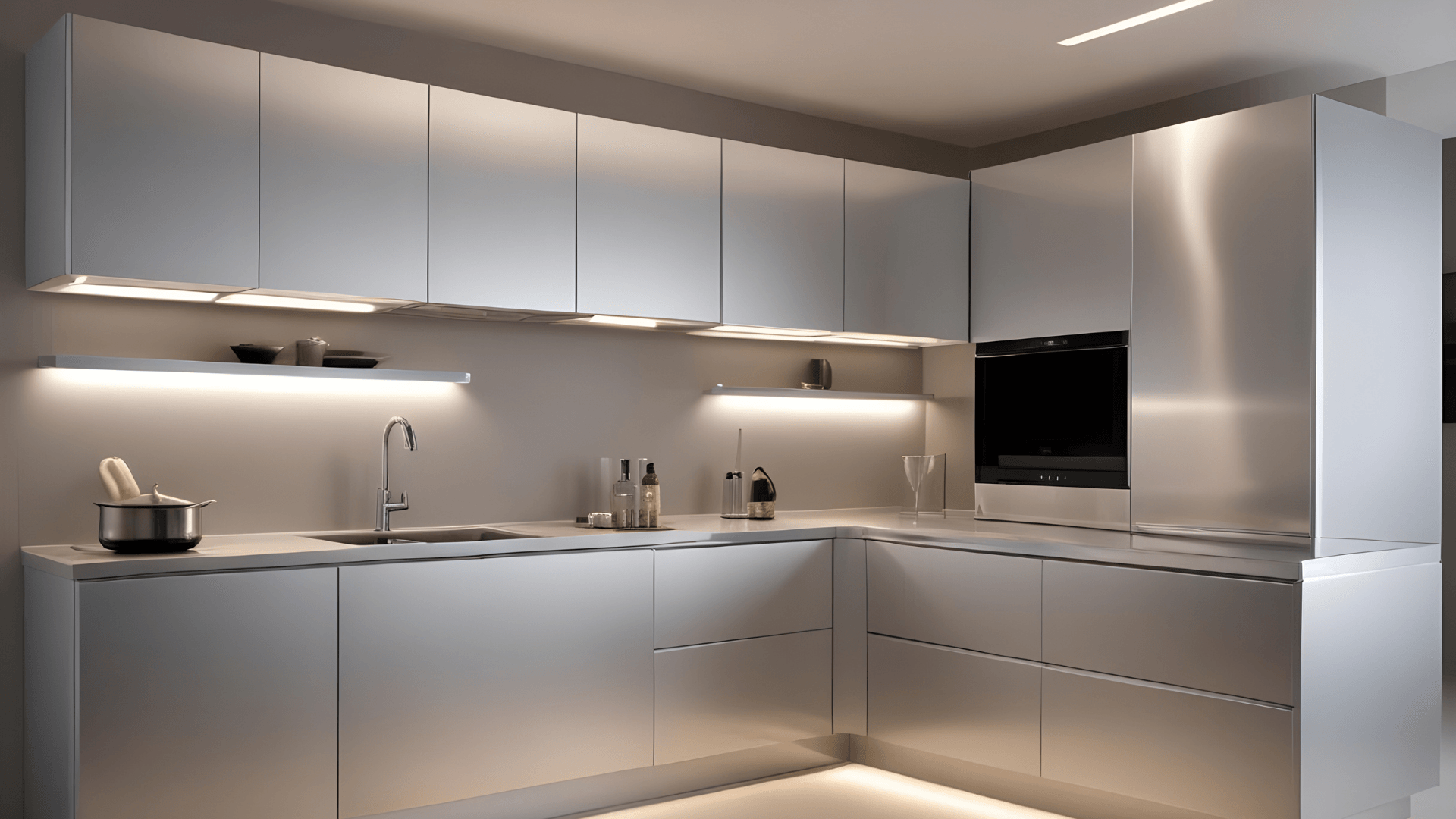Minimalist kitchen design transforms your cooking space from a cluttered chaos into a sanctuary of calm and intentionality. A staggering 85% of homeowners report feeling more stressed when cooking in disorganized kitchens, while those with minimalist spaces experience 60% less anxiety during meal preparation.
However, achieving minimalism doesn't mean creating a cold, sterile environment. Rather than stripping away all personality, the Japandi kitchen cabinet approach offers the perfect solution—combining the warmth of Scandinavian hygge with the intentional simplicity of Japanese esthetics. This fusion creates spaces that feel both functional and soul-nourishing.
In fact, Japandi kitchens are gaining tremendous popularity, with design professionals reporting a 78% increase in requests for this style over the past three years. The appeal is clear: clean lines, natural materials, and thoughtful storage solutions create a kitchen that supports both your cooking needs and your emotional wellbeing.
This guide will walk you through the essential elements of creating your own minimalist Japandi kitchen, from selecting the perfect cabinet style to choosing materials that bring nature indoors. By the end, you'll have a clear roadmap to transform your kitchen into a space that feels both luxurious and effortlessly simple.
Craving a Kitchen Oasis? Explore the Tranquil World of Japandi Design
Looking to transform your kitchen into a haven of serenity and style? Look no further than the Japandi trend! This rising star in kitchen design blends the best of Japanese minimalism and Scandinavian functionality, creating a space that's both beautiful and incredibly usable.
Embrace Simplicity and Light:
Japandi is all about clean lines, uncluttered surfaces, and a focus on natural elements. This minimalist approach creates a feeling of spaciousness and tranquility, perfect for those who crave a light and airy environment.
Nature's Touch for Coziness:
The Japandi aesthetic incorporates organic textures and natural materials like wood, stone, and bamboo. This connection to nature brings a sense of warmth and coziness to your kitchen, making it a calming space to prepare meals and connect with loved ones.
Function Meets Style:
Don't be fooled by the minimalist look – Japandi kitchens are highly functional. The focus on clean lines often translates to smart storage solutions and efficient layouts, ensuring your kitchen is a joy to cook in.
What Is Japandi Kitchen?
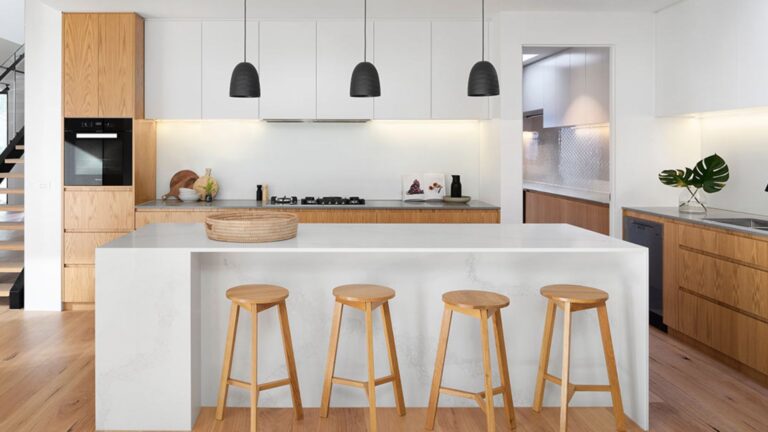
Looking for a fresh kitchen look that blends modern and calming vibes? Then Japandi might be your perfect style! This hot trend, emerging around 2016, combines the best of Japanese and Scandinavian design.
Imagine this:
- Clean lines and minimalism: Inspired by Japanese design, Japandi kitchens prioritize clean lines and a clutter-free aesthetic.
- Warmth of nature: Borrowing from Scandinavia, Japandi embraces natural materials like wood and incorporates calming neutral tones.
- Functionality at its finest: Both cultures celebrate functionality, so expect a kitchen designed for efficiency and ease of use.
The result? A kitchen that's both beautiful and practical, creating a space that's both stylish and serene. This is why Japandi has become a favorite among interior designers.
Key features of Japandi kitchens:
- Balance: A focus on achieving a careful balance between clean lines and natural elements.
- Neutral colors: Think calming beiges, whites, and grays, with pops of natural wood tones.
- Natural materials: Expect to see wood, stone, and bamboo incorporated throughout the design.
Choose a Calm and Neutral Color Palette
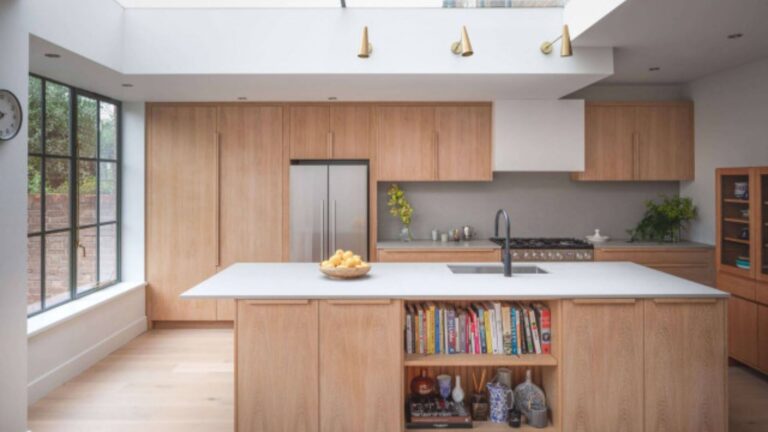
Japandi kitchens are all about creating a calming and minimalist atmosphere. To achieve this serene look, neutrality is key! Here's how to choose colors for your Japandi kitchen:
Neutral Walls and Cabinets: Set the tone for your space with neutral colors for walls and cabinets. Think whites, light beiges, or taupes.
Warmth Matters: While neutral, don't stray too cool! Opt for neutral shades with warm undertones, like light browns or sage greens. This keeps the space cozy and inviting, avoiding a sterile feel.
Finding Balance: Remember, Japandi blends Scandinavian and Japanese styles. Scandinavians favor muted tones, while Japanese design leans towards earthy colors. Find a happy medium between these two for a balanced and calming environment.
The color palette forms the foundation of any minimalist kitchen design. In Japandi esthetics, colors are not merely decorative elements but essential components that establish harmony, balance, and connection to nature. The right color scheme creates a serene atmosphere where form meets function in perfect equilibrium.
Use warm whites, beiges, and soft grays
Neutral tones serve as the cornerstone of the Japandi color palette, creating a sense of calm and balance while allowing other design elements to shine. Common base colors include beige, cream, and taupe. These warm neutrals prevent your minimalist kitchen from feeling cold and sterile – a common pitfall in minimalist spaces.
For cabinets specifically, the latest trends lean toward warm beige tones, which add understated elegance to both minimalist and modern kitchen designs. These cabinet colors pair beautifully with creamy white countertops for a sophisticated and harmonious esthetic. Additionally, warm beiges and soft grays help ground the space, especially in kitchens flooded with natural light.
When selecting the perfect neutral, remember that beige contains various undertones. According to color experts, the category of beige (yellow/golden-based neutrals) has five distinct undertones. The subtle differences between these undertones become apparent only when directly comparing them against your existing décor. Choosing the right undertone ensures your cabinets and walls create a cohesive look rather than clashing with other elements.
Balance light and dark tones for contrast
Achieving the perfect Japandi palette requires balancing light and dark colors. This interplay creates the harmonious yet dynamic atmosphere that defines the style. While light tones promote a sense of openness, dark tones create feelings of depth and intimacy [1].
One classic Japandi combination pairs crisp white or off-white for walls and furniture with black accents used sparingly in metal fixtures, picture frames, or lighting elements [4]. This combination works especially well in kitchens where contrasts help architectural features stand out without creating visual clutter.
For a more subtle approach, consider pairing light gray cabinetry with darker countertops. Many homeowners choose light gray cabinets so subtle they appear almost white unless placed alongside true white accents, which clearly defines the gray tones [5]. Furthermore, light-colored flooring, such as natural oak or pale tiles, complements darker gray cabinetry by enhancing brightness throughout the space.
Avoid overly bright or saturated colors
The Japandi design philosophy embraces simplicity and connection to nature, which translates into avoiding overwhelming color schemes. Bright, saturated colors can disrupt the calm, focused environment essential to a minimalist kitchen design.
Instead of bold colors, consider:
Earthy tones like olive green or muted browns that add warmth while maintaining connection to nature
Subtle accessories in complementary neutral shades that add interest without overwhelming
Natural material colors (wood, stone, ceramic) that serve as “colors” themselves
Textural variation rather than color variation to create visual interest
It's important to note that avoiding bright colors doesn't mean creating a monotonous space. Consequently, you can introduce subtle variation through different shades within the same color family or through natural material variations.
Remember that your color selections should create a timeless esthetic rather than following fleeting trends. Unlike trendy color schemes that quickly feel dated, a properly executed Japandi color palette consisting of warm whites, beiges, and soft grays creates a kitchen design that will remain relevant and appealing for many years, essentially making your investment both esthetically pleasing and practical.
Get Cabinet Quote ( In 24 Hours )
Select Natural and Textured Materials
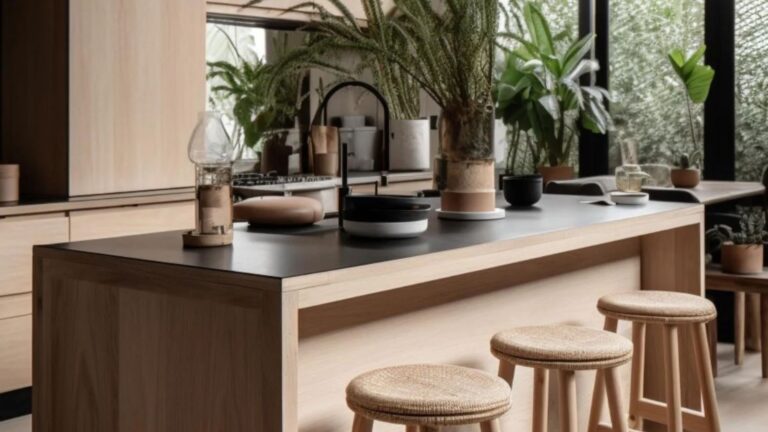
Japandi kitchens are all about clean lines, calming colors, and a connection to nature. So, what better way to enhance your space than by incorporating natural elements? Here's how:
- Welcome the Greenery: Plants add a touch of life and style to your Japandi kitchen. They pair beautifully with neutral walls and wooden cabinets, creating a tranquil atmosphere.
Plant Tip: If you're not the most experienced gardener, fear not! Choose easy-care plants like spider plants or aloe vera that thrive in most environments.
Play with Pots and Vases: Don't underestimate the power of planters! Choose pots and vases in colors that complement your overall scheme to tie the look together.
Embrace Natural Materials: Think beyond plants! Look for accessories made from natural elements like rattan light shades or woven baskets. These pieces add warmth, texture, and a touch of rustic charm to your Japandi kitchen.
Incorporate wood, stone, and bamboo
Untreated wood plays the leading role in Japandi kitchens, particularly light shades like oak, maple, and beech that showcase subtle, beautiful grain patterns. These woods bring a natural glow and warmth that immediately invites relaxation while making spaces feel brighter and more spacious. For cabinets specifically, light oak or ash creates a classic Japandi look, although darker wood tones like walnut can bring depth and sophistication to more modern homes.
Stone elements provide perfect counterpoints to wood, adding textural contrast and earthy qualities. Natural stone countertops—whether limestone, marble, or granite—create durability alongside visual interest. In particularly striking Japandi kitchens, stone islands become focal points, as seen in renovated homes where travertine or dramatically veined marble creates natural centerpieces.
Bamboo deserves special mention for bringing a light, airy feeling to kitchen spaces. Beyond its esthetic appeal, bamboo represents sustainability—a core value in authentic Japandi design. This versatile material works beautifully in everything from cabinet fronts to flooring.
Use linen or cotton for soft furnishings
Tactile softness balances the hardness of stone and wood in truly harmonious Japandi kitchens. Natural fibers like linen and cotton introduce gentle texture while maintaining the clean esthetic central to minimalist design.
For kitchen textiles specifically, cotton offers superior durability and absorbency, making it ideal for frequently used items like dish towels. Meanwhile, linen—with its natural creases and relaxed appearance—brings rustic charm and elevated appeal to table settings. Both materials become softer and more beautiful with time, aligning perfectly with the Japandi appreciation for natural aging processes.
Consider incorporating these textiles through:
Kitchen towels in neutral tones for practicality and subtle design interest
Table runners or placemats that add textural layers
Simple curtains that filter light beautifully
Add handmade ceramics for authenticity
Handmade ceramics embody the Japandi principle of “wabi-sabi”—finding beauty in imperfection. These pieces add soul to minimalist kitchens through their slightly irregular forms and organic textures. From everyday plates and bowls to decorative vases, handcrafted ceramic pieces introduce authenticity that mass-produced items cannot match.
Ceramic varieties worth considering include:
Terracotta with its warm, natural ochre coloring
Stoneware featuring raw, rustic textures ideal for minimalist esthetics
Porcelain offering refined, delicate qualities
Earthenware providing practical durability with artisanal charm
Avoid synthetic or glossy finishes
Authentic Japandi style steers clear of materials that feel manufactured or artificial. Synthetic materials or glossy finishes break the visual flow of a minimalist kitchen and create disconnection from the natural world.
Instead, opt for matte finishes on all surfaces, from cabinets to countertops. This approach creates visual cohesion while honoring the authentic nature of materials. Similarly, avoid chrome or acrylic elements that might introduce an unwanted industrial quality.
The key principle remains honoring materials in their most natural state—allowing wood grain to show, stone textures to be felt, and ceramic irregularities to be celebrated. Through this thoughtful selection of natural, textured materials, your minimalist kitchen becomes not just a cooking space but a sensory experience grounded in nature.
Design Minimalist and Functional Cabinets
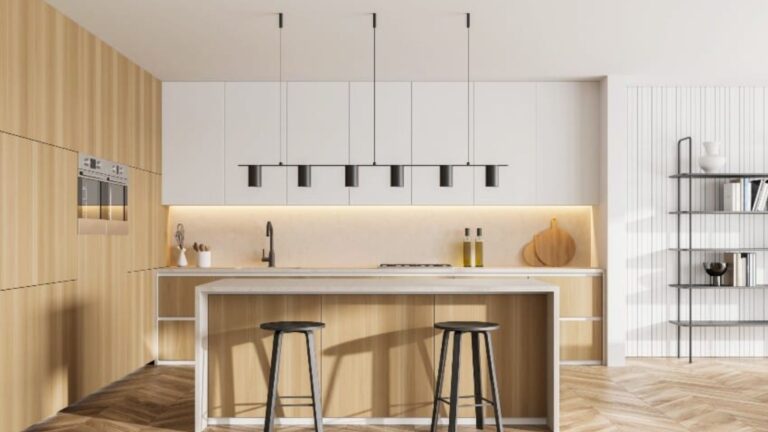
Cabinets serve as the cornerstone of any functional kitchen design, occupying most visual space and defining both esthetics and utility. In Japandi style, cabinets embody the perfect balance between Japanese minimalism and Scandinavian functionality, creating spaces that feel both serene and practical.
Opt for flat-panel or handleless doors
Flat-panel cabinet doors create the clean, uninterrupted lines essential to minimalist design. Their smooth, single-panel construction without bevels, imprints, or contours delivers a streamlined look that works beautifully in contemporary spaces. These doors feature perfect 90-degree angle corners and lack ornamental designs, making them ideal for modern esthetics.
For an even more refined appearance, consider handleless cabinets. These innovative designs eliminate visual clutter through several mechanisms:
J-pull or C-channel profiles that provide comfortable finger space
Push-to-open systems that open with gentle pressure
Beveled edge designs offering subtle grip areas without visible hardware
Handleless cabinets not only create visual harmony through clean lines but also offer practical benefits—reducing the risk of accidental bumps and making cleaning simpler with fewer places for dust to collect.
Use hidden storage to reduce clutter
One core principle of Japandi design involves creating peaceful, relaxing environments through smart organization. Hidden storage solutions help maintain this clutter-free esthetic while maximizing functionality. Built-in cabinets with seamless doors and pull-out drawers make efficient use of available space while keeping items neatly tucked away.
Indeed, truly successful Japandi kitchens feature modular drawer systems and pull-out worktops that ensure every object has a designated place. This approach provides greater peace of mind and visual overview while supporting the minimalist principle that every element should serve a clear purpose.
Choose light wood finishes for warmth
Light wood cabinetry creates a warm, inviting atmosphere while maintaining minimalist appeal. Woods like ash and oak provide neutral backdrops that enhance the kitchen's overall feel. These lighter tones reflect light beautifully, making spaces feel larger and more welcoming—particularly beneficial in smaller kitchens or areas lacking natural light.
Furthermore, light wood cabinets bring organic warmth that prevents minimalist designs from feeling cold or sterile. Their natural grain patterns add subtle visual interest without overwhelming the senses, perfectly embodying the Japandi balance between simplicity and natural beauty.
Match cabinet tones with flooring
Creating harmony between cabinets and flooring establishes visual coherence throughout your kitchen. Generally, contrasting yet complementary colors work better than identical tones, which can create a flat, uninteresting effect. If you've chosen light wood cabinets, consider flooring in a slightly different shade to create depth and visual interest.
Mostly, darker flooring grounds the space when paired with lighter cabinets. Alternatively, in smaller rooms or spaces with limited natural light, lighter flooring opens up the space and makes it feel larger. Above all, ensure that undertones match between cabinets and flooring to maintain visual harmony—warm wood cabinets pair beautifully with warm-toned floors.
Get Cabinet Quote ( In 24 Hours )
Create an Open and Airy Layout
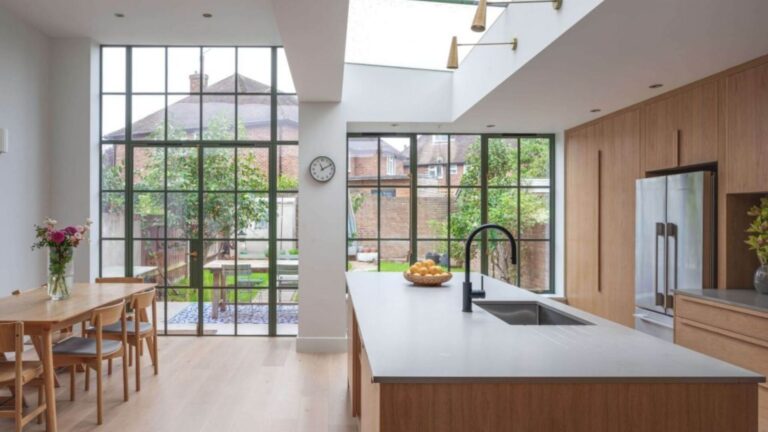
Space and organization play crucial roles in minimalist kitchen design. A well-designed Japandi kitchen emphasizes openness, breathability, and thoughtful arrangement – qualities that create both visual appeal and practical functionality.
Use open shelving to reduce visual weight
Open shelving transforms your kitchen's appearance by creating an illusion of spaciousness. Unlike closed cabinets, open shelves allow your walls to breathe, making even compact kitchens feel more expansive [18]. This arrangement increases both functionality and efficiency while maintaining the clean esthetic essential to Japandi design [19].
For optimal results:
Limit yourself to 2-4 tiers to prevent overcrowding [18]
Mix open shelving with closed cabinetry for playful yet organized contrast [19]
Display only select items like handmade ceramics or clear glasses [19]
Open shelves needn't follow rigid patterns – asymmetrical or modular arrangements often create more visual interest [19]. White shelves work exceptionally well in small kitchens, blending seamlessly with walls to enhance brightness [18].
Maximize natural light with large windows
Throughout Japandi design, natural light serves as a fundamental element rather than an afterthought. Large windows or glass doors flood your kitchen with daylight, creating a connection between indoor and outdoor spaces [20]. For kitchens with limited window options, consider these alternatives:
First, position shelves near natural light sources to magnify brightness [18]. Second, use reflective surfaces like glass shelves or light-colored materials to bounce light throughout the space [21]. Finally, complement natural illumination with simple, functional fixtures like minimalist pendant lamps that highlight natural materials [20].
Keep countertops clear and organized
The countertop represents your kitchen's functional workspace, not a storage area [22]. Maintaining clear counters not only creates visual calm but makes cooking more efficient.
Primarily, designate proper homes for everyday items in drawers or cabinets [7]. Subsequently, use vertical space wisely through wall-mounted storage or hooks. For items that must remain visible, corral them using wooden trays or containers that align with your esthetic.
Remember that a clutter-free counter becomes self-reinforcing – once clear, it motivates you to maintain that state [7]. This approach perfectly embodies the Japandi principle that every element should serve both function and esthetic purpose.
Add Subtle Accessories and Greenery
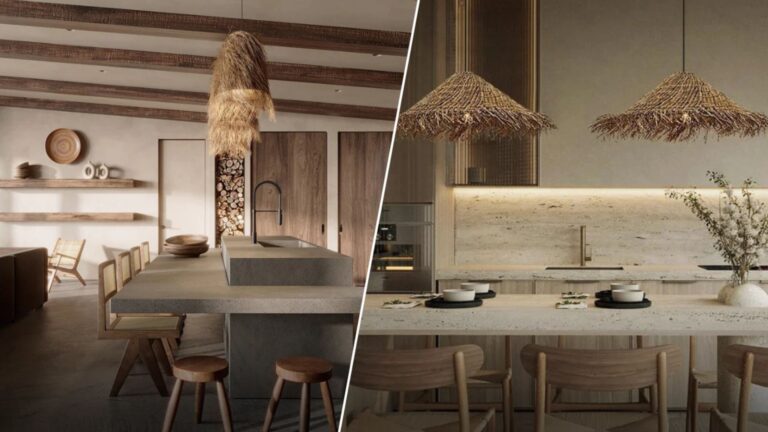
Finishing touches breathe life into minimalist kitchen designs, preventing spaces from feeling too austere or clinical. In Japandi esthetics, thoughtfully chosen accessories and plants create balance between functionality and beauty.
Use potted plants to bring nature indoors
Indoor greenery softens clean lines and creates a refreshing atmosphere in minimalist kitchens. Plants add color and movement without contributing to visual clutter [25]. Consider placing small herb gardens on windowsills or introducing non-tall potted trees for vertical interest. Snake Plants offer architectural form with minimal care requirements, while Fiddle Leaf Figs provide dramatic presence with their broad, glossy leaves [26]. Moreover, plants help purify air, fostering wellbeing alongside esthetic appeal [27].
Choose functional decor like wooden trays
Wooden serving trays excel as both practical tools and design elements. Made from materials like mango, acacia, or teak, each tray features unique grain patterns that add natural warmth [28]. These versatile pieces can corral kitchen essentials such as oils and spices, keeping counters organized yet visually cohesive [29]. Furthermore, wooden trays complement numerous design styles—from rustic to minimalist—making them worthy investments.
Limit accessories to avoid clutter
In Japandi design, every object should serve a clear purpose. Restrict decorative items to a few well-chosen pieces that enhance the overall look without overwhelming the space [3]. Nevertheless, minimalist kitchens needn't be monochromatic—small splashes of color or texture through textiles or accent pieces can introduce warmth and personality [25].
Use textured rugs or curtains for softness
Textural elements provide necessary contrast to hard kitchen surfaces. Long flowing curtains beside patio doors filter light beautifully, coupled with textured rugs under dining tables to add warmth [2]. These soft furnishings enhance acoustics by absorbing sound, creating quieter, more peaceful environments [30].
Get Cabinet Quote ( In 24 Hours )
The Conclusion
Minimalist Japandi kitchen design offers a perfect balance between esthetic beauty and practical functionality. This approach transforms ordinary cooking spaces into serene sanctuaries where every element serves a purpose. The thoughtful combination of Japanese minimalism and Scandinavian warmth creates kitchens that feel both intentional and welcoming, rather than cold or sterile.
Throughout this guide, we've explored how neutral color palettes featuring warm whites, soft grays, and beiges establish a calm foundation for your kitchen. These colors work together to create visual harmony while allowing natural materials to shine. Additionally, the incorporation of wood, stone, bamboo, and handmade ceramics brings authentic texture and warmth that mass-produced materials simply cannot match.
Cabinet design stands as perhaps the most crucial element of your Japandi kitchen. Flat-panel or handleless doors eliminate visual noise, while hidden storage solutions keep countertops clear and organized. Light wood finishes add necessary warmth, essentially preventing the minimalist esthetic from feeling austere or unwelcoming.
Space matters tremendously in achieving the perfect Japandi kitchen. Open shelving reduces visual weight, large windows maximize natural light, and clear countertops create both practical working areas and visual calm. These elements work together to establish the signature airy feeling that defines this style.
Finally, subtle accessories and greenery bring life to your kitchen without contributing to clutter. Plants, wooden trays, and textured textiles add personality while maintaining the clean esthetic that makes Japandi design so appealing.
Your journey toward a minimalist Japandi kitchen represents more than just a design choice. This approach fosters a calmer cooking environment, reduces stress, and creates spaces that support both physical tasks and emotional wellbeing. Undoubtedly, the resulting kitchen will feel both luxuriously simple and deeply nurturing—a space that truly enhances your daily life for years to come.

